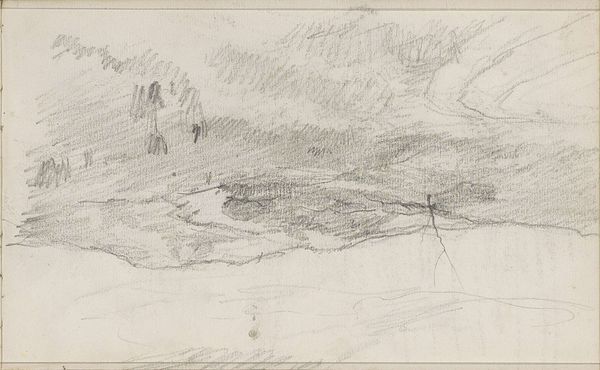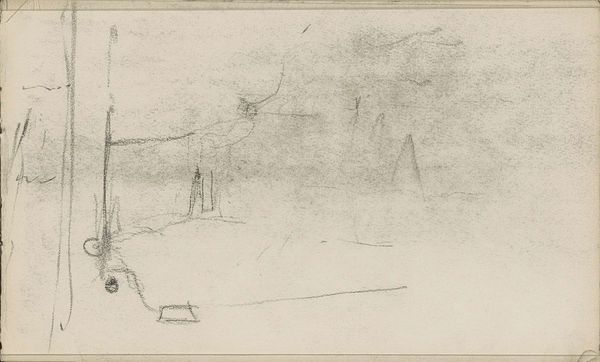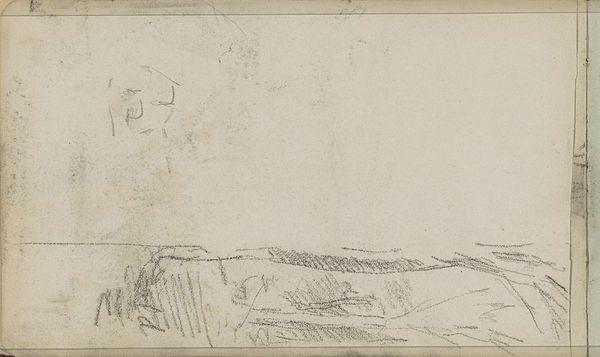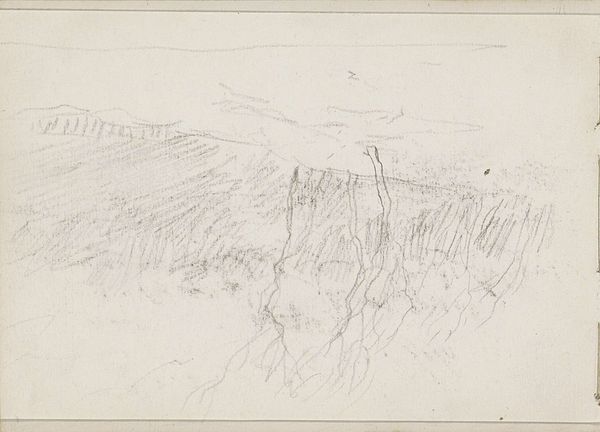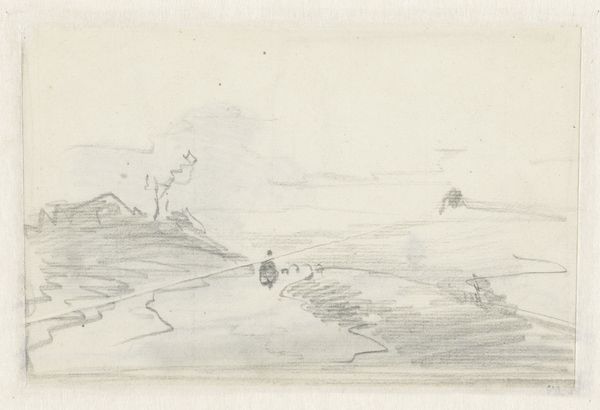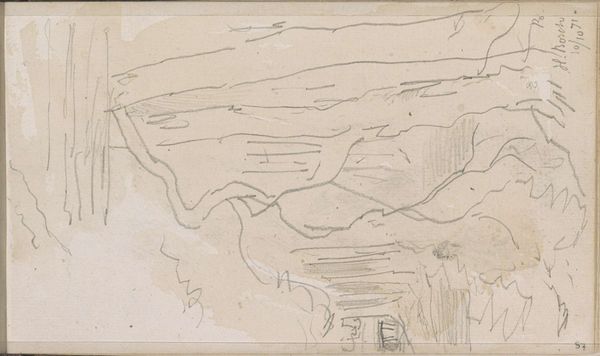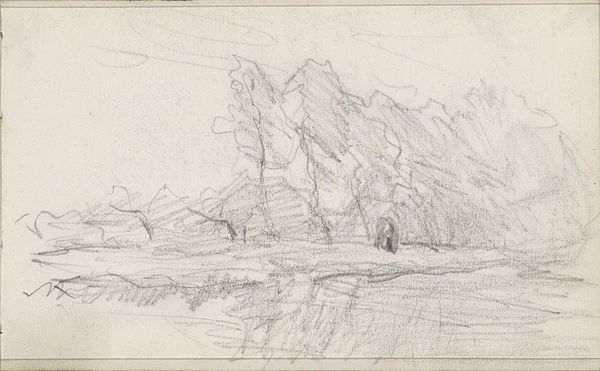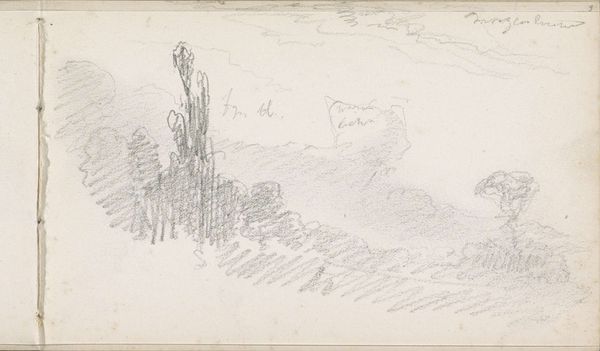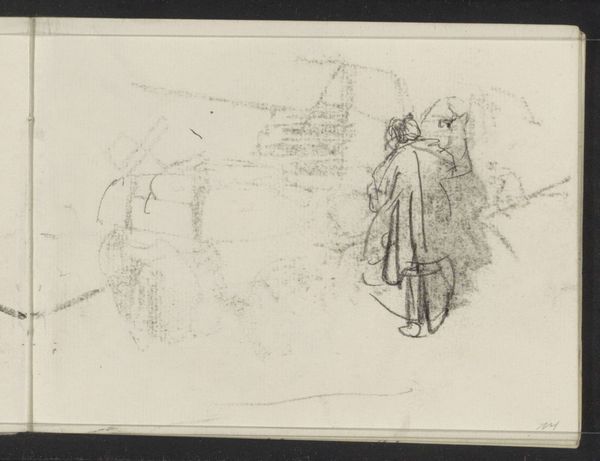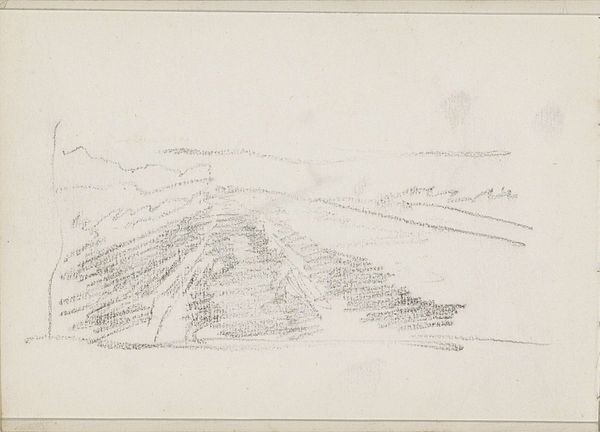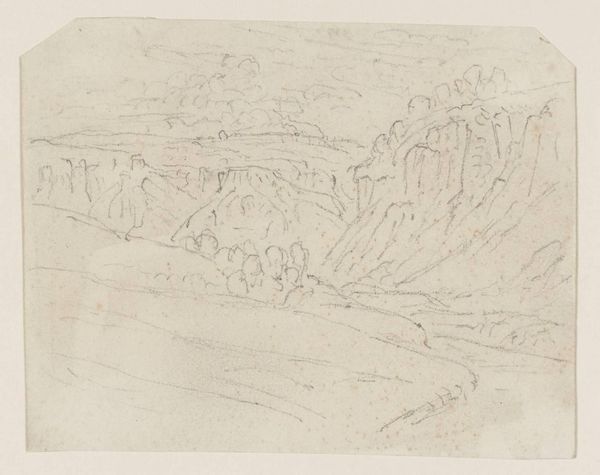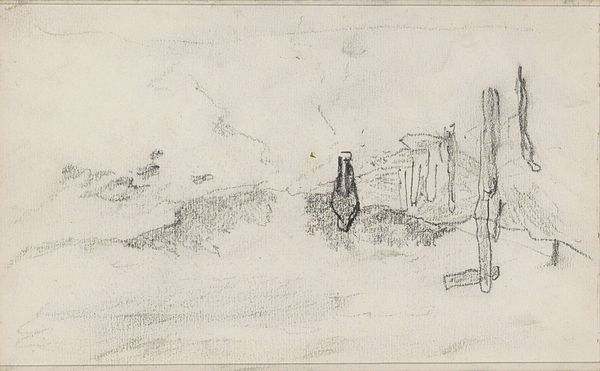
drawing, pencil
#
drawing
#
light pencil work
#
quirky sketch
#
dutch-golden-age
#
sketch book
#
incomplete sketchy
#
landscape
#
personal sketchbook
#
idea generation sketch
#
sketchwork
#
pen-ink sketch
#
pencil
#
sketchbook drawing
#
sketchbook art
#
realism
Copyright: Rijks Museum: Open Domain
Curator: Looking at Anton Mauve's "Figuur bij een heuvel," which translates to "Figure by a Hill," I'm immediately struck by its incompleteness. Editor: Incomplete, perhaps, but I see a sort of desolate beauty in this light pencil work. The composition leads the eye from the dark figure on the left across a subtly rendered landscape to what looks like a vaguely defined hill. Curator: Yes, that dark figure becomes significant, doesn't it? It positions the viewer, offering a point of entry into a space of rural labor. I am reminded of how artists during that time, roughly between 1848 and 1888, grappled with the changing rural landscape due to industrialization, seeking to capture what was quickly vanishing. Editor: I can see that social commentary angle, certainly. From a purely visual point of view, I find the simplicity almost disarming. There’s a tension created by the juxtaposition of that very defined figure with the loosely sketched hill and wispy suggestions of vegetation. The artist used the pencil strokes to suggest texture and depth. Curator: Mauve was known for his landscapes populated with working-class figures, so, his choice to make the human presence a strong element resonates with those historical developments. This wasn't just a landscape study; it reflected broader social realities of labor and belonging. This sketchbook aesthetic allowed social exploration without the pressure of final form. Editor: That makes me consider the bareness, it speaks of essentials only—perhaps that reduction reflects the austerity of rural life itself, the materials used are pared down, creating something both honest and affecting. Curator: Exactly! And remember the Rijksmuseum houses this piece. To see sketches elevated to such spaces indicates a huge shift in what’s considered important for preservation and artistic value. Editor: It certainly does shift our perceptions. Thinking about it just visually, the figure against that soft gray background—there's a delicate balance there. The sketch becomes a study in contrasts between solidity and vagueness. Curator: Precisely, it asks us to reconsider what constitutes "finished" art. Instead, we confront these crucial social narratives about changing rural experiences. Editor: Ultimately, for me, its artistic merit lies in how much the drawing achieves with so little. A very pure artistic expression.
Comments
No comments
Be the first to comment and join the conversation on the ultimate creative platform.
